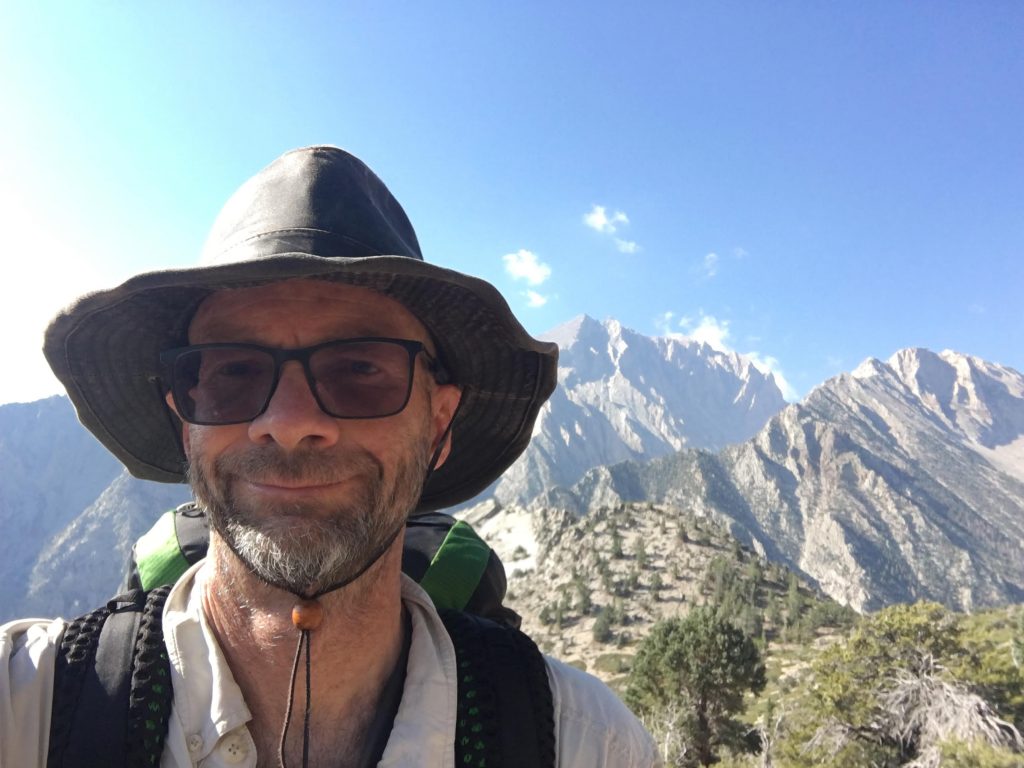5 September 2018–SSA President Peter Shearer has deep ties to the Society he now heads. He published his first professional paper in the Bulletin of the Seismological Society of America, and he gave his first professional talk at the 1981 SSA Annual Meeting in Berkeley. “I was incredibly nervous,” he recalls, “but it was a very supportive community, and I felt like I was at home there. I’m personally very fond of SSA, and I like that its members have a say in how it is run.”
In his year as president, Shearer wants to focus on bringing a larger global seismology presence to the organization. “Historically, we have had a lot of whole-earth and theoretical seismology, although in recent years our meeting and our journals have tended to focus more on strong-motion and engineering seismology,” he says. “I would like to try to broaden it to become more inclusive of all aspects of seismology.”

As part of his work toward this goal, Shearer says he is encouraging colleagues to create special sessions on mantle and core studies and theoretical or computational seismology for whole-Earth problems at the 2019 SSA Annual Meeting in Seattle, Washington.
Shearer was a geology major as an undergraduate at Yale, without much exposure to geophysics or seismology. He thought he might like to be a photographer after college, “but it only took me a few months to realize that the artistic photography classes that I enjoyed in college were not what I needed to make money in the real world,” he jokes.
After moving back to California, he worked at the U.S. Geological Survey in Menlo Park, first as a lab tech in geochemistry and petrology, then transferring to the seismology branch. “That was when the first desk-top computers were coming out—well, not desk-top yet, but smaller than a building, at least,” he says. “I found that I enjoyed writing computer programs for these things, so it made sense to do seismology, because you get to work with computers and data a lot more than you do with geology.” Eventually Shearer received his Ph.D. in geophysics from Scripps Institution of Oceanography, where he is a professor today.
As an observational seismologist, who has analyzed existing seismic data sets for most of his career, he says he is fortunate to be in a field with such “a great tradition of data-sharing.” Other scientific fields from genomics to extrasolar astronomy are beginning to develop the widely-accessible databases and resource sharing that have been a hallmark of seismology for years, Shearer noted. “Seismic stations used to be operated locally by individual countries and research institutions, but you can’t do a lot with just one station,” he explains. “It developed fairly early on that ‘I’m going to share my data with you and you’re going to share your data with me.’ Even before computers, data centers would keep track of seismic data from all over the world.”
Now, Shearer says, “modern global seismic networks, rather than being operated for the benefit of a small group of local researchers, are operated for the community, and data are made available for the entire community. That’s something that’s happened only fairly recently for other fields like astronomy.”
It’s a system that makes things more democratic, he adds. “If you have a good idea, you can go get the data and try it out … you don’t need to be part of a big consortium or be at a school that has a lot of money in order to do good science.”
At Scripps, Shearer teaches graduate classes in seismology and programming, and has just finished writing the third edition of his textbook, Introduction to Seismology (Cambridge University Press). One of the challenges in teaching seismology, he says, is making sure that students understand probability and statistics. “It’s important, because there’s a large component of randomness to a lot of seismicity and earthquakes … it gets to the question of why it’s so hard to predict earthquakes,” he says.
Seismologists also have less control over the “experiments” they run with the Earth’s data, compared to other sciences, so students and researchers–in-training have “to learn to tolerate a larger level of uncertainty than you might have to tolerate in another science,” Shearer adds.
Shearer says the work he enjoys the most “is exploring new seismic datasets, trying out something new on an old data set, just messing around with the data. The excitement comes from seeing something new that you had not known was there in the data.”
He pointed to two studies in particular where this “messing around” had fascinating results: a project where he and his colleagues stacked global long-period seismograms to image seismic discontinuity phases in the mantle—providing a new way to map mineral phase transitions in the upper mantle. Another project looking at Japanese seismic data collected after the 2004 magnitude 9.3 Sumatra earthquake allowed Shearer and his colleague Miaki Ishii (now at Harvard) to image the rupture as it propagated northward for more than 1000 kilometers over eight minutes.
“Some of the most exciting things that I’ve discovered or been a part of in my career were not actually things that I knew beforehand we were going to see,” he says.
SSA At Work is a monthly column that follows the careers of SSA members. For the full list of issues, head to our At Work page.
